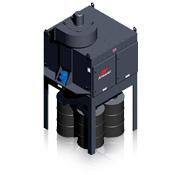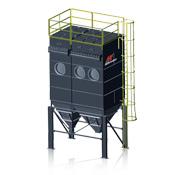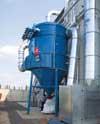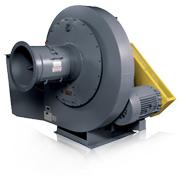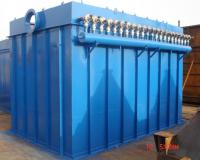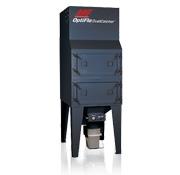Product Specification
| Brand | APC |
| Condition | New |
| Warranty | YES |
Product Descriptions
The KinPactor utilizes kinetic energy to accomplish dust collection through the principle of impaction. The contaminated gas stream is accelerated through a venturi shaped throat section reaching velocities between 9,000 and 24,000 feet per minute (100 to 280 miles per hour). Water introduced ahead of the throat is atomized by the high velocity gas stream, and dust particles collide with and are captured in the millions of small droplets.
In the long diverging section behind the KinPactor throat, static pressure is regained as the velocity of the gas stream is reduced. Sub-micron size particulate and water droplets coalesce during this interval providing additional collection.
The water laden gas stream enters the separator tangentially where droplets are removed by centrifugal force and impingement. Clean, droplet-free air passes through the separator outlet and slurry is continuously drained from the water eliminator section. The venturi shape of the KinPactor provides the most efficient conversion of potential energy (static pressure) into kinetic energy (velocity), and then allows maximum regain or reconversion of this high velocity back to static pressure as velocity diminishes in the diverging section.
Many orifice-type collectors utilize a construction shape somewhere between that of the sharp edged orifice and the venturi, and demonstrate a more efficient energy conversion than the sharp edged orifice but less efficient conversion than the KinPactor. Due to its higher performance capabilities, the venturi-type collector has been categorized in its own classification rather than grouped with the orifice type. The KinPactor, with its venturi shape, provides the highest possible collection efficiency for a given power consumption, since the power expended is most effectively utilized.



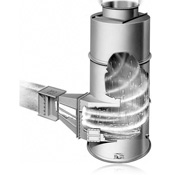
 Safe and secure payments using Abraa safe trade systems
Safe and secure payments using Abraa safe trade systems  \
\
